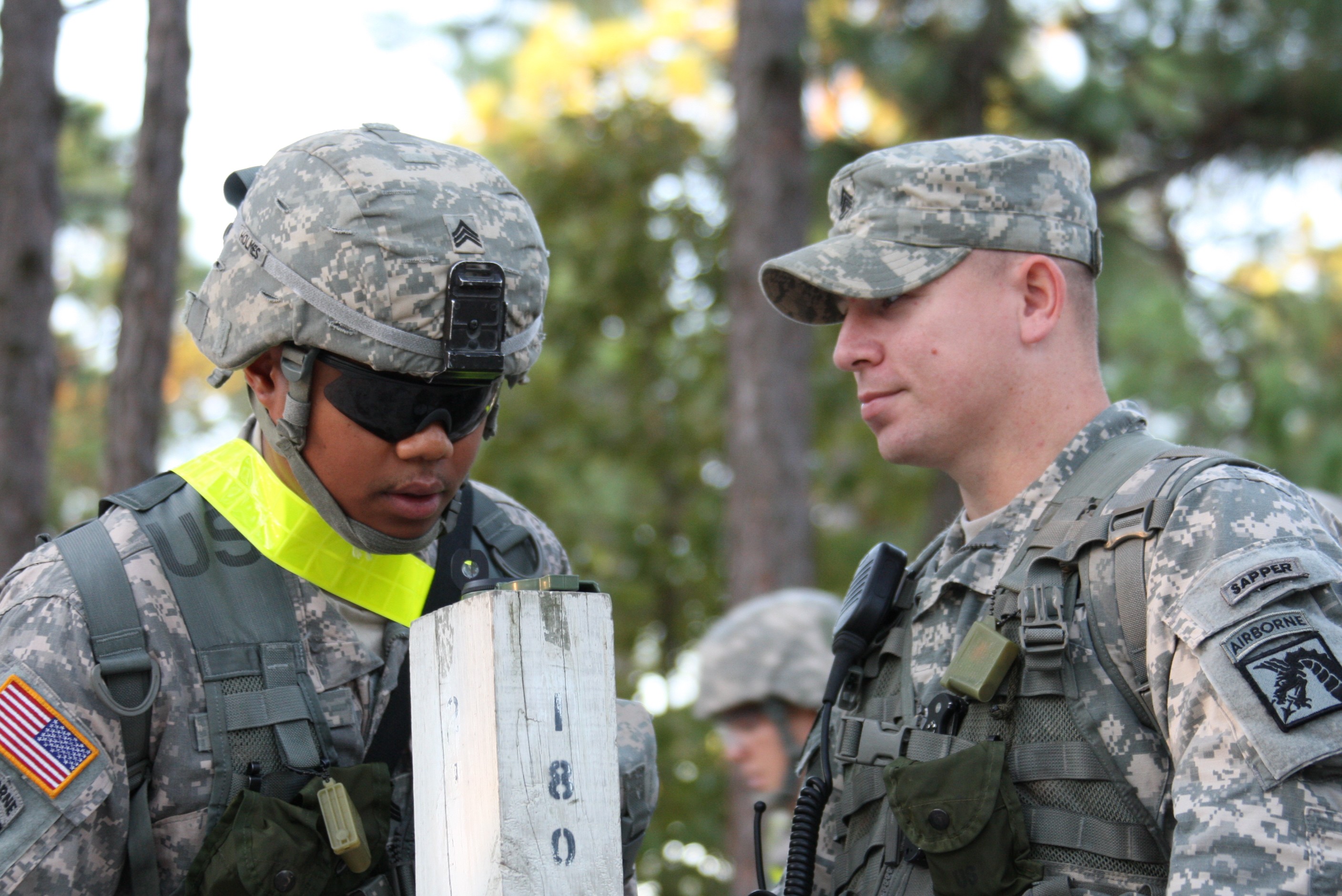
FORT BRAGG, N.C. - The year of the noncommissioned officer is coming to a close. This year, the Army celebrated the "backbone of the Army" and the professionals who lead the nation's Soldiers both in battle and during the less celebrated daily, garrison operations.
Command Sgt. Maj. Roger Howard, the commandant of XVIII Airborne Corps and Fort Bragg's NCO Academy, said that even though the year of the NCO is nearing its end, every year is the year of the NCO at the academy.
"Our mission here is critical and stays the same whether it is the year of the NCO or the year of the tiger," said Howard, a native of Goodman, Miss. "The role of the NCO continues to become greater each day, as they are managing and training their Soldiers for combat."
The NCO Academy was established on Fort Bragg in 1972 and is the second largest in U.S. Army Forces Command. While the academy at Fort Hood, Texas is larger, Fort Bragg's academy trains and graduates more students than any other NCO academy annually. The cadre teach 15 Warrior Leader Course classes, with a 350 student capacity, each year and had the only stand alone Basic Noncommissioned Officer Course, phase one program, in the Army until the course changed Oct. 1. In 2008, the Department of the Army recognized the academy as an institution of excellence, an achievement that celebrates the academy's commitment to maintaining and exceeding the Army's standards.
The academy's primary mission is to train NCOs in leadership, battle focus, physical training and the other valuable tools they need to lead and train their own Soldiers.
In keeping with the mission of Fort Bragg, the academy is also an airborne unit and each cycle, if conditions allow, the instructors and airborne students conduct a jump.
With the cyclical nature of the academy, the shortage of instructors, World War II-era buildings and relying on external units to provide support from vehicles to medics to opposing forces for field exercises, the academy staff face a lot of challenges while training Fort Bragg's junior NCOs. Sgt. 1st Class Jared Matthews, chief of operations at the NCO Academy said the results are worth it.
"The NCO education system is extremely important and plays a major role in the Army's effectiveness," said Matthews, a native of Midland, Mich. "The most rewarding part of our work here is the ability to educate and mentor junior leaders at the institutional level and see them go back and do great things with that knowledge."
Howard, who has served in the Army for almost 27 years with 20 of those years as part of the 82nd Airborne Division, said what the Soldiers are learning is his number one priority.
"I'm always concerned about the product being taught in the classroom and whether we are doing our best. There are 22 classrooms and I can't be in all 22, but I know that everyone is mission focused and on task with training the Army's future leaders," he said. "I want to make sure we reach every Soldier in an effective manner, leaving them with tools they need to be successful. If we can do that, I know we've done something right."
Spc. George Amaya, a student in October's WLC from 28th Combat Support Hospital, said the academy is definitely doing their job right.
"I'm getting ready to go down range to Iraq and I feel a lot more confident now," said Amaya. "They've helped me develop the skills I need to train my guys up and get the mission done."
(Editor's note: This is part one in a four part series about Fort Bragg's Noncommissioned Officer Academy with a focus on the academy's mission, the Warrior Leader Course and the changes to the Advanced Leader Course.)

Social Sharing